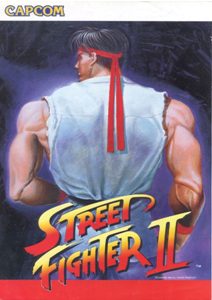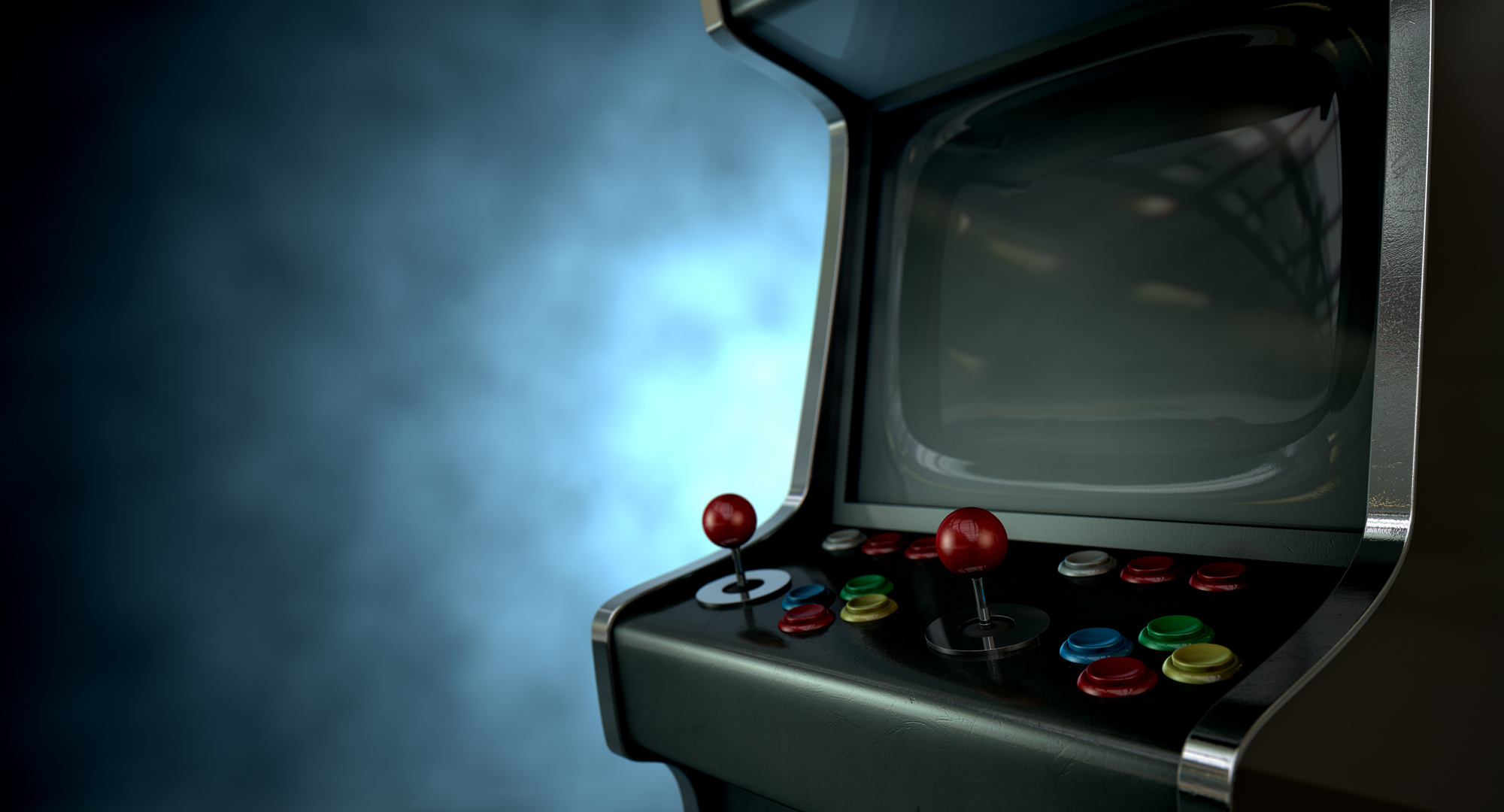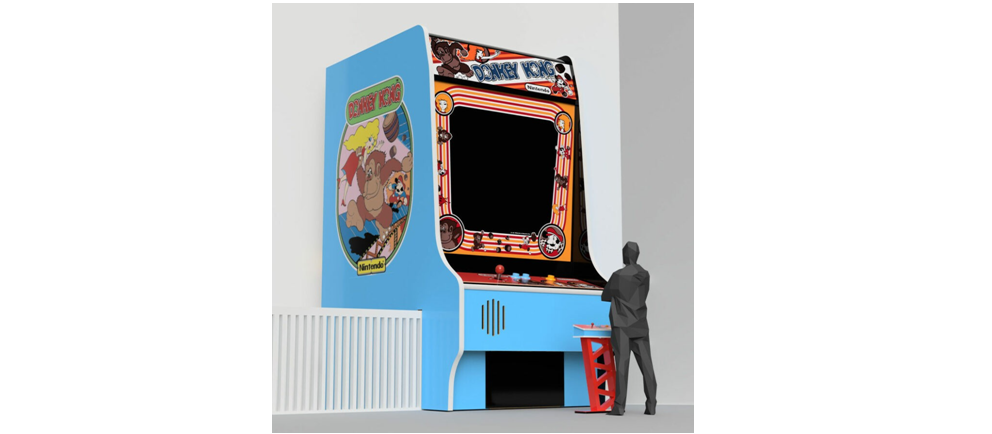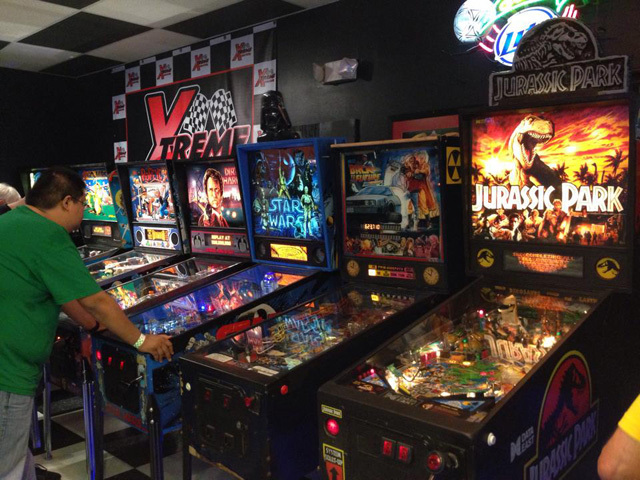History of Arcade Gaming

As I sit on my living room couch, basking in the glory of 1080p, 60FPS, and cutting edge gaming on my PC, which is connected to my 60” HDTV via HDMI, I can’t help but start to think of where it all started. As a hardcore gamer myself, who views video games more as a way of life rather than a hobby, I believe it is of utmost importance to adequately recognize arcade gaming’s contributions towards modern video games. After all, it was due to arcade gaming sparking people’s interest in video games as an industry that we can now enjoy playing on home consoles and personal computers from the comfort of our home.
But I’m getting way ahead of myself, in order to properly illustrate arcade gaming’s prestigious history, we would need to jump way back. Specifically, to the early twentieth century, where mechanical games were just invented and were featured mostly in amusement parks as an awesome, yet finicky attraction.
Birth of Arcade Games

In 1909, a brilliant young inventor named Jonathan Dickinson Este designed and built the first arcade game in history; the Skee Ball machine. As many of you may know, Skee Ball is a popular game which involves rolling a fist-sized ball down a narrow lane. The objective is to roll the balls into one of many holes at the end of the lane. The difficulty stems from the lane’s steep upward incline, and the precision required to land the ball into the holes which give the most points.
Skee Ball was the first redemption game on the market, and rewarded the players with tickets based on their performance during the round. Needless to say, the first Skee Ball machines were a huge success, but were limited to teens and adults, as the lane was 36 feet long and required considerable strength to land the balls into the holes. Nowadays, the lanes were reduced to only 14 feet in order to accommodate a wider audience.
Baffle Ball and the Advent of Pinball Machines

Skee Ball was the mainstay of arcade gaming up until 1931, when Baffle Ball came into existence. Created by the hands of David Gottlieb of the Gottlieb amusement company, Baffle Ball was the predecessor of modern Pinball machines. The game was entirely mechanical and used no electricity. The core gameplay consisted of firing small balls into the playing field at just the right strength to try and land them into one of many holes, which were worth a differing amount of points. At a glance, the objective is similar to that of Skee Ball, but the gameplay was performed exclusively on a compact board, as opposed to a whole lane. Similar to modern pinball, the game started out by propelling the balls into play with a spring mechanism, but unlike pinball, it had no flippers that the player could interact with. In the end, Baffle Ball was no more than a game of chance. Because of this, it was regarded as a gambling game, and was banned from several states due to its nature.
Baffle Ball was the first coin-operated game in existence, and was the predecessor not only to pinball, but to all other arcade machines that currently operates in this manner.
Now, Pinball has been around for much longer than Baffle Ball, and was regarded similarly as a game of chance. The first “primitive” Pinball machines go back to the early 1700s, when the spring launcher was first invented, and reached their apex in 1869, when said launchers became a common staple of the industry. However, it wasn’t until 1931 where the first Pinball machines incorporated coin operation into their system, becoming the modern games we have grown to love.
During its inception, Pinball operated similar to Baffle Ball, in that they also didn’t feature flippers, and were regarded and regulated as games of chance. The biggest legal attack on these machines happened in New York during the ‘40s, where the then Mayor Fiorello LaGuardia banned the game in the city, a ban that wouldn’t be lifted until 1976. Thousands of machines were confiscated, destroyed, and thrown in the river.
This measure was partially successful; it was true that some unscrupulous individuals would fill their pockets on the Pinball craze that took over many citizens at the time. This prohibition was targeted towards said individuals, along with gangsters, brothels, gambling dens, and other undesirables. But it also damaged the businesses of honest game designers that invested both their time and money in creating state-of-the-art Pinball machines for everyone to enjoy.
The addition of flippers that would add increased interactivity into the game was performed in 1947, turning Pinball into a game of skill, rather than chance. However, the ban on Pinball would not get lifted until 1976, when it was proved in a courtroom that Pinball was a game of skill. As Roger Sharpe (the witness who was testifying) was operating the machine that was set up in the courtroom, he would call out to the jury the plays he was going to make just seconds before doing so. The precision in his moves left the jury speechless, and a vote to lift the ban was called for. Ultimately, the vote resulted in favor, and the ban on Pinball was lifted. It was a glorious day for both machine designers and players everywhere.
The arcade gaming scene remained pretty much the same through the years after the ban on Pinball was lifted.
Origins of the First Coin-Operated Video Games

The year 1971 was a very important period in arcade gaming; it was the year when the first coin-operated video game was invented and sold in the market. Galaxy Game was the name of the game, and it consisted of a multiplayer space battle, where two players were pitted against each other and would attempt to blow themselves up using their ships’ torpedoes and swift maneuvers.
The gameplay was simple, but effective: the ships were monochrome, and were placed on a black screen with a backdrop of stars. In the center of the arena was a particularly big star which would exert gravitational pull on the ships, and would serve as an added layer of challenge to player movement. Each player would control their ship’s movements via a joystick, while firing their weapons and performing other actions were bound to several buttons on the panel. The objective was to destroy the other player’s ship, while keeping an eye on your own torpedoes and remaining fuel, as they were finite. This meant that resource management was crucial to achieving victory in Galaxy Game.
Galaxy Game’s Legacy

Galaxy Game was groundbreaking, because it was the first arcade machine that used a visual display on a computer screen to present its elements of gameplay. After only one year of Galaxy Game’s presence on the market, Atari Inc. released its own arcade video game in 1972. Said game was known as the one and only Pong.
Pong is highly regarded as one of the most important video games in history, even being mistakenly referred to as the “first video game” by many followers of pop culture. It is true, however, that Pong was the first successful arcade video game in history, and single-handedly spawned the industry. In the years to come, many companies would try their own hand at creating clones of the titular game, but no one could outshine the original.
From 1972 to 1984, more than 15 other companies would dedicate their trade to creating arcade video games. In this period of time, games such as Astro Race, Basketball, Speed Race, Gun Fight, Moto-Cross, and many more would be created at the hands of companies such as Taito, Midway, Sega, Exidy, among others.
The Golden Age of Gaming
Pong’s arrival in the arcade gaming market helped elevate the industry into a golden age, a time in which arcade video games attained unrivaled popularity and reached its apex in both innovation and amount of machines produced and sold. The period of time that this phenomenon spanned is up for debate, but several key elements were clearly present during this time.
For instance, the release of Space Invaders in 1978 is said to be the beginning of the golden age. Its ending was somewhere around 1984-1985, after Nintendo released their very popular Nintendo Entertainment System, and Sega released its Sega Master System. After the arrival of these consoles, arcade gaming started losing its popularity, and were replaced by these machines that could be played at home, at no additional cost, other than the game cartridges. These cartridges were very expensive at the time, but offered virtually unlimited replay value, making the investment well worth the price.
Arcade Gaming’s Second Wind

After the end of Arcade Gaming’s Golden age, the industry had gone from $12 million in revenues each year in 1982, to just over $100 million in 1985. In short; it was dying and was in dire need of a push to kick-start its lost popularity.
The industry found the push it needed in arcade fighters. In 1991, Capcom released the Street Fighter II arcade cabinet. The sheer popularity that this machine acquired was enough to revive the whole industry, and entirely switch its focus from space simulators and platformers, to fighting games. Mortal Kombat was also a very important addition to this genre, and was also hugely successful as an arcade game.
However, despite its immense popularity, fighting games would only take the industry so far, and by the mid-90s, the arcade gaming scene once again slowed down.
In 1999, Konami released the first-ever Dance Dance Revolution Machine which, given the proliferation of fighting games at the time, was received with doubts and hesitation. Despite this, the machines sold like crazy, achieving over $6.5 million in sales by 2003, and opening the scene for rhythm games.
Afterwards, the arcade gaming industry garnered a steady following. As modern arcade cabinets started adapting to home console’s standards in both graphical quality and gameplay, everyone from youths, teens, young adults, and even the elderly would enjoy a round in one of the many machines available. As time went on, many other companies would create their own machines, some of which incorporated new elements to the standard gameplay formula. For instance Nintendo would add cameras to their Mario Kart Arcade GP machine that would snap pictures of the player, and would use them during gameplay.
The Future of Arcade Gaming

Similar to home consoles, arcade gaming has reached a point where the standard gameplay formula “just works”, and no amount of graphical and hardware improvements will keep the attention of the masses for long enough to pull a profit. Although there are die-hard purist fans that would rather keep their old-school pong and Donkey Kong, many younglings of the current generation may be put off by the primitive graphics and gameplay.
It is because of this that developers constantly try to add more gameplay elements, or change the way games are played in order to mix things up and add more variety to the already-colossal library of arcade games.
In 2013, 4-D gaming first arrived in the industry with the Dark Escape 4D cabinet. This horror shooter (an already common genre in the industry by this point) incorporated elements of surround sound, 3D images, heart-rate monitors, vibrations, and blasts of air to provide the player with an unparalleled amount of immersion during gameplay. By occupying most of the senses with the gameplay, the player could feel that he was truly living the game, which could lead to both gratifying and terrifying experiences.
As virtual reality technology advances, it is expected that newer arcade games will start incorporating it in their games. However, due to its price and limited accessibility, this may still be a ways off before proliferating. Regardless, it seems that arcade gaming has a bright future ahead of it.
What a time to be alive!
PrimeTime Amusements is at the forefront of arcade gaming technology, always keeping up with the latest updates and releases. We deal in arcade gaming rentals and sales to any interested parties. We feature both classic titles, and their modern counterparts in our catalog of hundreds of machines. If you are looking to acquire a specific arcade machine, either for a special occasion, or for personal use, feel free to give us a call at 1.800.550.0090 or send us an email at info@primetimeamusements.com. At PrimeTime Amusements, we’re always happy to be of service.






[…] already covered the advent and subsequent decline of arcade gaming in a previous article. In that sense, we are well aware of the influence that some noteworthy titles had on the industry. […]
[…] in particular: We’ve always referred to arcade gaming as a relic of the past. Articles such as “History of Arcade Gaming”, “Top Arcade Games of the 90’s”, or even “Fun Facts About Pac-Man”, only serve to […]
[…] already covered the advent and subsequent decline of arcade gaming in a previous article. In that sense, we are well aware of the influence that some noteworthy titles had on the industry. […]